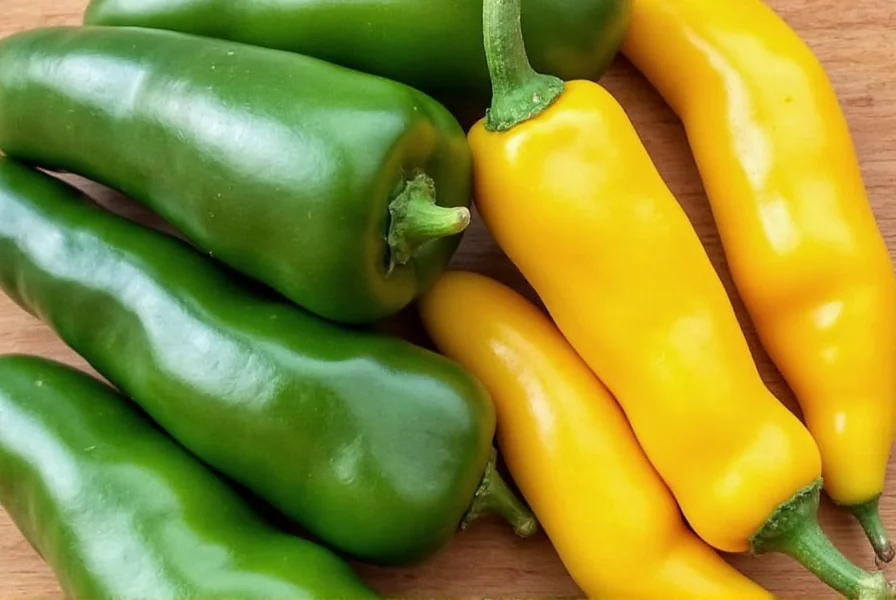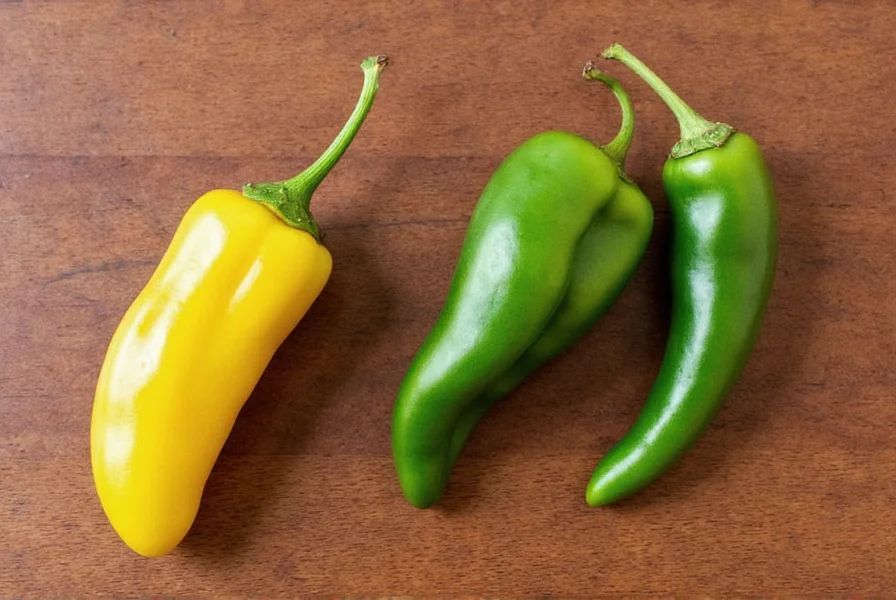Poblano Peppers vs Pasilla: Which One Adds More Magic to Your Meal?

Table of Contents
- Introduction
- What Are Poblano Peppers?
- What Is Pasilla Pepper?
- Poblano vs Pasilla: A Flavorful Face-Off
- How to Use Each in Cooking
- Buying Guide: Choosing the Right One for You
- Frequently Asked Questions
- Conclusion
Introduction
If you've ever wandered through a Mexican market or scrolled through a spice catalog, you've probably come across two names that sound familiar but taste worlds apart: poblano peppers and pasilla peppers. Both are staples in traditional Latin American cooking, yet they bring very different flavors and textures to the table. Whether you're simmering a mole sauce or roasting vegetables, choosing between these two can make all the difference.
In this article, we’ll break down the differences between poblano peppers and pasilla peppers, help you understand when to use each, and give you tips on how to select and store them like a pro. Let’s dive into the spicy showdown!

What Are Poblano Peppers?
Poblano peppers are large, dark green peppers originating from the state of Puebla in Mexico. They’re named after their home region — "Poblano" literally means "from Puebla." These peppers are mild to medium-hot, usually measuring around 1,000–2,000 Scoville Heat Units (SHU), which makes them perfect for people who want flavor without too much fire.
When fresh, poblanos have a slightly earthy, grassy flavor. But where they really shine is when they’re roasted or dried. Roasting intensifies their flavor and brings out a smoky sweetness, while drying them transforms them into what’s known as ancho chiles — one of the most popular dried peppers used in Mexican cuisine.
- Heat Level: Mild to Medium (1,000–2,000 SHU)
- Flavor Profile: Earthy, herbaceous, with hints of chocolate and tobacco when dried
- Best For: Stuffed peppers, sauces, soups, and salsas
What Is Pasilla Pepper?
The pasilla pepper, also known as chile negro, is a long, thin, wrinkled, dark purple to black-colored pepper. Unlike poblanos, pasillas start life as fresh peppers but are typically found dried. The name "pasilla" means "little raisin," which makes sense once you take a whiff — they have a sweet, fruity aroma reminiscent of dried fruit and berries.
Pasilla peppers pack more heat than poblanos, clocking in at about 2,500–3,000 SHU. Their complex flavor includes notes of plum, prune, coffee, and even licorice. Pasillas are often used in moles, stews, and marinades where depth and richness are desired.
- Heat Level: Medium-Hot (2,500–3,000 SHU)
- Flavor Profile: Fruity, raisiny, deep, with hints of chocolate and coffee
- Best For: Mole sauces, braised dishes, and rich marinades
Poblano vs Pasilla: A Flavorful Face-Off
Let’s put these two peppers head-to-head so you can see where they shine — and where they differ:
| Feature | Poblano Pepper | Pasilla Pepper |
|---|---|---|
| Origin | Mexico (Puebla) | Mexico (Central/Southern regions) |
| Color (Fresh) | Dark green | Deep purple to black |
| Form Available | Fresh or dried (Ancho) | Usually dried |
| Heat Level | 1,000–2,000 SHU | 2,500–3,000 SHU |
| Flavor Profile | Earthy, vegetal, mildly smoky | Sweet, fruity, deep, raisiny |
| Common Uses | Stuffed peppers, salsas, sauces | Mole, braises, stews |
How to Use Each in Cooking
Knowing how to use these peppers in your kitchen is just as important as understanding their flavor profiles. Here’s how to get the most out of each:
Using Poblano Peppers
- Roast Them: Place under a broiler or over an open flame until blistered and blackened. Peel off the skin and use inside tacos, quesadillas, or soups.
- Stuff It: Poblano rellenos stuffed with cheese and baked? Yes please! This classic dish showcases the pepper’s versatility.
- Dry for Ancho Chiles: If you dry them, they become anchos, which are sweeter and slightly milder. Perfect for making sauces and mole.
Using Pasilla Peppers
- Soak Before Use: Rehydrate dried pasillas in warm water or broth for 20–30 minutes before using in sauces or moles.
- Make a Sauce: Blend soaked pasillas with garlic, onions, and spices to create a rich base for enchiladas, tamales, or meats.
- Add Depth to Braises: Drop a few pasilla chiles into a slow-cooked stew or chili to enhance complexity and color.
Buying Guide: Choosing the Right One for You
Whether you're shopping online or at your local market, here's how to pick the best poblano or pasilla peppers for your culinary adventures:
Choosing Fresh Poblano Peppers
- Look for: Firm, glossy skin without soft spots or wrinkles.
- Avoid: Yellowing or overly soft peppers — signs of age or damage.
- Storage: Keep in a plastic bag in the fridge for up to a week.
- Pro Tip: Roast extra and freeze them flat in a ziplock bag for easy use later.
Selecting Dried Pasilla Peppers
- Look for: Uniform dark color and intact skin without cracks or mold.
- Avoid: Peppers that are brittle or have a musty smell — they’ve likely gone bad.
- Storage: Store in an airtight container away from light and moisture. Can last up to a year.
- Pro Tip: Buy in small quantities if you cook infrequently to ensure freshness.
Top Picks: Recommended Products
Here are some trusted options available in stores and online:
Gourmet Garden Organic Poblano Peppers (Fresh Frozen)
- Features: Flash-frozen to lock in flavor and texture.
- Advantages: No prep needed — ready to roast or stuff straight from the freezer.
- Use Case: Ideal for busy cooks or meal preppers.
- Who Needs It: Home chefs and spice lovers.
- Best For: Quick meals and freezing convenience.
La Morena Whole Dried Pasilla Peppers
- Features: Authentic Mexican sourced, natural drying process.
- Advantages: Rich aroma, consistent size and quality.
- Use Case: Making mole, sauces, and stews.
- Who Needs It: Serious home cooks and gourmet enthusiasts.
- Best For: Traditional recipes and complex flavor profiles.
Frequently Asked Questions
Can I substitute pasilla for poblano or vice versa?
You can in a pinch, but expect flavor differences. Poblanos are earthier and less sweet; pasillas are fruitier and deeper. For stuffing, stick with poblanos. For sauces, try swapping with mulato or ancho instead of pasilla.
Is pasilla the same as ancho?
Nope! Ancho is the dried version of the poblano pepper. Pasilla is its own variety — darker, thinner, and fruitier.
Do I need to remove seeds from pasilla peppers?
Not always, but removing seeds reduces heat. If you want milder flavor, yes — otherwise, leave them in for extra kick.
Are pasilla peppers hard to find?
They may be harder to find fresh, but most well-stocked grocery stores and online retailers carry dried versions. Check international markets for authentic quality.
Conclusion
Whether you’re grilling up a batch of stuffed poblanos or blending a luxurious pasilla-based mole, both peppers offer unique flavors and culinary opportunities. While poblano peppers are more versatile and accessible for everyday cooking, pasilla peppers add a rich, complex depth that’s hard to beat in more advanced dishes.
Now that you know the key differences and uses for each, you can confidently choose the right pepper for your next recipe. Don’t be afraid to experiment — sometimes the best flavors come from stepping just outside your comfort zone. Happy spicing!
Got questions about other peppers or spice blends? Let us know in the comments below!










 浙公网安备
33010002000092号
浙公网安备
33010002000092号 浙B2-20120091-4
浙B2-20120091-4